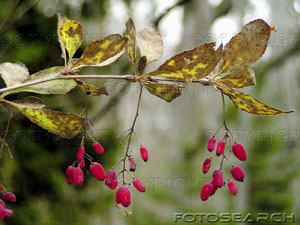Oregon Grape Root Berberis aquifolium or Mahonia aquifolium which is a close cousin.
Oregon Grape Root is used to treat Acne; Arthritis, As an Expectorant; Bloodstream infection; Bronchitis; Diarrhea; Eczema; Fever; Fluid Retention; Gallbladder Disease; Hepatitis; Herpes; Kidney Stones; Painful Urination; Psoriasis; Rheumatism; Stomach Upset; Syphilis; To Stimulate Bile Production; Vaginitis…
Barberry and Oregon Grape: Barberry and Oregon Grape Root – Powerful Antibiotics and More: Infection fighting, lowers blood pressure, anti-inflammatory. #
Warning: Do not use if pregnant or nursing, low blood pressures, chronic respiratory problems, or certain heart ailments.
Botanical name: Berberis vulgaris: Oregon Grape Root: B. aquifolium or Mahonia aquifolium.
Chinese Botanical name:
This information clearly states that Barberry and Oregon Grape Root (which is a close cousin) do have benefits.
—Description— Antibiotic, Immune Stimulant, Pinkeye, High Blood Pressure, Cough, Diarrhea, Fever, Jaundice, Intriguing Possibilities. #
—Family— Berberidaceae; other members include May Apple, Mandrake, and Blue Cohosh.
—Synonyms— Berberry, Berberis, Jaundice Berry.
—Parts Used— Root bark.
—Constituents— Berberine.
—Medicinal Action and Uses— Most present day herbalists limit their recommendations to gargling barberry decoction for sore throat and drinking it for diarrhea and constipation. But if they read the medical journals, they'd recommend it for a great deal more.·
—Antibiotic— The berberine in barberry has remarkable infection fighting properties. Studies show it kills microorganisms that cause wound infections (Staphylococci, Streptococci), diarrhea (Salmonelia, Shigella), dysentery (Endamoeba histolytica), cholera (Vibrio cholera), giardiasis (Giardia lamblia), urinary tract infections (Escherichia coli), and vaginal yeast infections (Candida albicans).
—Immune Stimulant— Berberine may also fight infection by stimulating the immune system. Studies show that it activates the macrophages (literally, “big eaters”), white blood cells that devour harmful microorganisms.
—Pinkeye— Barberry's traditional use in treating eye problems is alive and well in Germany, where a berberine preparation, Ophthiole, is used to treat sensitive eyes, inflamed lids, and pinkeye (conjunctivitis). Unfortunately, the product is not available in the United States. A compress made from an herbal infusion may prove helpful, however.
—High Blood Pressure— Barberry contains chemicals that may help reduce elevated blood pressure by enlarging blood vessels, thus lending support to the herb's traditional Russian use as a treatment for high blood pressure.
—Intriguing Possibilities— One study shows that barberry helps shrink some tumors. Another shows it has anti-inflammatory activity, suggesting possible value in treating arthritis. More research needs to be done in both areas before any specific recommendations can be made.
—Dead-End File— A few contemporary herbalists continue to recommend barberry as “one of the best remedies for correcting liver functions.” British researchers have isolated substances in the plant which promote the flow of bile, but barberry is not considered therapeutic for jaundice or other liver problems. So much for “jaundice berry.”
—Nutrient Source—
—Side Effects or Negative Effects— In high doses, barberry can cause nausea, vomiting, convulsions, hazardous drops in blood pressure, and depression of heart rate and breathing. Those with heart disease or chronic respiratory problems should be careful not to take large doses and should take this herb only with the knowledge and approval of their physicians. Berberine may stimulat4e the uterus. Thus, pregnant women should not use it. Barberry is a powerful herb and it should be used cautiously by otherwise healthy non-pregnant, non-nursing adults. Barberry should be used in medicinal amounts only in consultation with your doctor. If barberry causes minor discomforts, such as stomach upset or diarrhea, use less or stop using it. If it causes dizziness or faintness, stop using it. Let your doctor know if you experience any unpleasant effects or if the symptoms for which the herb is being used do not improve significantly in two weeks.
—Deterrent—
—References— “Advanced Treatise in Herbology” by – Edward E. Shook, N.D., D.C. Copyright by Wendell W. Whitman 302 E. Winona Avenue, Warsaw, IN 46580.
—References— Business Dictionare.com http://www.businessdictionary.com/definition/anaerobic.html
—References— “Dicitionary.com” http://www.dictionary.com
—References— “From the Shepherd's Purse” by – Max G. Barlow, Copyright 1990, ISBN 0-9602812-0-7.
—References— “The Healing Herbs – The Ultimate Guide to the Curative Power of Nature's Medicines” by – Michael Castleman; Copyright 1991; ISBN: 0-87857
-934-6.
—References— “Healing Herbal Teas” A Complete Guide to Making Delicious, Healthful Beverages. By – Brigitte Mars, A.H.G. ISBN – 13: 978-59120-110-6 and ISBN – 10: 1-59120-110-1 Copyright 2006
—References— “Herbal Medicine” The Natural Way to Get Well and Stay Well; By Dian Dincin Buchman, Ph. D ISBN – 0-517-147647-x; Copyright 1996
—References— Medicine Net.com http://www.medterms.com
—References— Medical Herbalism The Science and practice of herbal medicine by David Hoffman, FNIMH, AHG, Copyright 2003, ISBN – 0-89281-749-6
—References— “Nutritional Herbology” A Reference Guide to Herbs By – Mark Pedersen ISBN: 1-885653-07-7 Copyright 2008
—References— Planetary Herbology by – Michael Tierra, C.A., N.D., Copyright 1988, ISBN – 0-941524-27-2
—References— “Prescription for Nutrition Healing” by – Phyllis A. Balch, CNC, Copyright 2006, ISBN: 1-58333-236-7.
—References— “The Healing Herbs – The Ultimate Guide to the Curative Power of Nature's Medicines” by – Michael Castleman; Copyright 1991; ISBN: 0-87857-934-6; Page: 72 – 74
—References— “The Ultimate Healing System – The Illustrated Guide to Muscle Testing & Nutrition” by – Donald Lepore, N.D.


Generated on June 25th, 2007
Updated on September 10th, 2015
Updated on March 17, 2023
Note: Information and statements about the products on this Page and/or PDF file, have not been evaluated by the Food and Drug Administration and are not intended to diagnose, treat, or prevent any disease. You should not use the information contained herein for diagnosing or treating a health problem or disease or prescribing any medication. If you have or suspect that you have a medical problem, promptly contact your health care provider.



